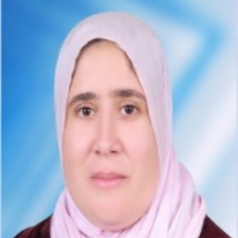
Nada M. ElShennawy
Work place: Computers and Automatic Control Dept., Faculty of Engineering, Tanta University, Tanta, Egypt
E-mail: Nada_elshennawy@f-eng.tanta.edu.eg
Website:
Research Interests: Human-Computer Interaction, Computer systems and computational processes, Computational Learning Theory, Computer Vision, Neural Networks, Pattern Recognition, Computer Networks, Data Structures and Algorithms
Biography
Nada M. Elshennawy was born in 1978, Egypt.
She received the PhD in WiMAX wireless networks from Tanta University, Egypt. She is an assistant professor at the Department of Computers and Automatic Control Engineering, Faculty of Engineering, Tanta University, Egypt.
Her research interests are in machine learning, computer vision and human behavior recognition, wireless networks, wireless sensor networks, neural networks.
Author Articles
Deep Learning Sign Language Recognition System Based on Wi-Fi CSI
By Marwa R. M. Bastwesy Nada M. ElShennawy Mohamed T. Faheem Saidahmed
DOI: https://doi.org/10.5815/ijisa.2020.06.03, Pub. Date: 8 Dec. 2020
Many sensing gesture recognition systems based on Wi-Fi signals are introduced because of the commercial off-the-shelf Wi-Fi devices without any need for additional equipment. In this paper, a deep learning-based sign language recognition system is proposed. Wi-Fi CSI amplitude and phase information is used as input to the proposed model. The proposed model uses
three types of deep learning: CNN, LSTM, and ABLSTM with a complete study of the impact of optimizers, the use of amplitude and phase of CSI, and preprocessing phase. Accuracy, F-score, Precision, and recall are used as performance metrics to evaluate the proposed model. The proposed model achieves 99.855%, 99.674%, 99.734%, and 93.84% average recognition accuracy for the lab, home, lab + home, and 5 different users in a lab environment, respectively. Experimental results show that the proposed model can effectively detect sign gestures in complex environments compared with some deep learning recognition models.
Other Articles
Subscribe to receive issue release notifications and newsletters from MECS Press journals